Qatar Carbonates and Carbon Storage Research Centre
Type of resources
Topics
Keywords
Contact for the resource
Provided by
Years
Formats
Update frequencies
-
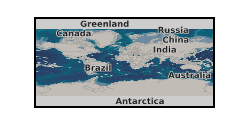
The datasets contain 5 stitched X-ray micro-tomographic images (grey-scale, doped, difference, segmented porespace and segmented micro-porespace with porespace) and 3 X-ray nano-tomographic images of a region of microporous porespace in Estaillades Limestone. The x-ray tomographic images were acquired at a voxel-resolution of 3.9676 µm using a Zeiss Versa XRM-510 flat-panel detector at 70 kV, 6W, and 85 µA with an exposure time of 0.037s and 64 frames. The X-ray nano-tomographic images were reconstructed using a proprietary filtered back projection algorithm from a set of 1601 projections, collected with the Zeiss Ultra 810 with 32nm voxel size using a 5.4keV energy quasi-monochromatic beam with an exposure time of 90s. The data was collected at Imperial College London and Zeiss Labs with the aim of investigating pore-scale microporosity in carbonates with a heterogenous pore structure. Understanding the effect of microporosity on flow is important in many natural and industrial processes such as contaminant transport, and geo-sequestration of supercritical CO2 to address global warming. These tomographic images can be used for validating various pore-scale flow models such as direct simulations, pore-network and neural network models for upscaling flow across scales.
-
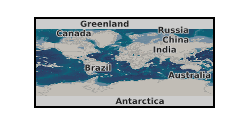
The images in this dataset are a sample of Doddington Sandstone from a micro-computed tomography (micro-CT) scan acquired with a voxel resolution of 6.4µm. This dataset is part of a study on the effects of Voxel Resolution in a study of flow in porous media. A brief overview of this study summarised from Shah et al 2015 follows. A fundamental understanding of flow in porous media at the pore-scale is necessary to be able to upscale average displacement processes from core to reservoir scale. The study of fluid flow in porous media at the pore-scale consists of two key procedures: Imaging reconstruction of three-dimensional (3D) pore space images; and modelling such as with single and two-phase flow simulations with Lattice-Boltzmann (LB) or Pore-Network (PN) Modelling. Here we analyse pore-scale results to predict petrophysical properties such as porosity, single phase permeability and multi-phase properties at different length scales. The fundamental issue is to understand the image resolution dependency of transport properties, in order to up-scale the flow physics from pore to core scale. In this work, we use a high resolution micro-computed tomography (micro-CT) scanner to image and reconstruct three dimensional pore-scale images of five sandstones and five complex carbonates at four different voxel resolutions (4.4ìm, 6.2ìm, 8.3ìm and 10.2ìm, scanning the same physical field of view. S.M.Shah, F. Gray, J.P. Crawshaw and E.S. Boek, 2015. Micro-Computed Tomography pore-scale study of flow in porous media: Effect of Voxel Resolution. Advances in Water Resources July 2015 doi:10.1016/j.advwatres.2015.07.012 We gratefully acknowledge permission to publish and funding from the Qatar Carbonates and Carbon Storage Research Centre (QCCSRC), provided jointly by Qatar Petroleum, Shell, and Qatar Science & Technology Park. Qatar Petroleum remain copyright owners
-
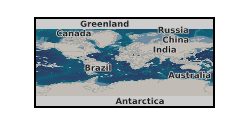
This dataset contains 10 three dimensional x-ray tomographic images of CO2-acidified brine reacting with Ketton limestone at a voxel size of 3.8 microns. It includes the unreconstructed projections (.txrm), the reconstructed images (.txm), and the masked and cropped segmented images (.am and .raw). The rock was imaged during dissolution 10 times over the course of 2.5 hours. Details can be found in Menke et al., 2015 in the journal Environmental Science and Technology.
-
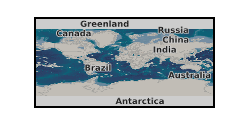
The data contains three-dimensional maps of the temporal and spatial distribution of tracer concentration during miscible displacements with aqueous solutions in two cylindrical porous samples, thus including beadpack (BP) and Ketton Limestone (KL). The dynamic imaging of the displacement process was conducted using two different PET scanners, namely a Siemens Biograph 64 PET/CT for the experiments with the BP (at Imanova Ltd, UK) and a Siemens INVEON DPET for the experiments with KL (at Stanford University, USA). The experiments were carried out at flow rates, q = 10 mL/min for BP and q = 4 mL/min for KL. Each PET image represents an average over a constant time frame (45 frames of 20 seconds each for BP and 40 frames of 60 seconds each for KL). For BP, each 3D tomogram includes (128 x 128 x 111) voxels with size (1.34 x 1.34 x 2) mm3. For KL, each 3D tomogram includes (128 x 128 x 159) voxels with size (0.78 x 0.78 x 0.8) mm3. The PET dataset was used in Kurotori et al. (2018)* to characterise mm-scale dispersion during miscible displacements in these two porous media. The experimental observations of the spatio-temporal evolution of the tracer plume can also be used as a benchmark test for different numerical models for solute transport in heterogeneous porous media. Further details on the use of the PET images can be found in Kurotori et al. (2018). *T. Kurotori, C. Zahasky, S. A. Hosseinzadeh Hejazi, S.M. Shah, S.M. Benson, Measuring, imaging and modelling solute transport in a microporous limestone, Chemical Engineering Science (2018), under review.
-
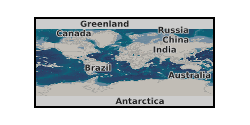
The images in this dataset are a sample of Doddington Sandstone from a micro-computed tomography (micro-CT) scan acquired with a voxel resolution of 4.2µm. This dataset is part of a study on the effects of Voxel Resolution in a study of flow in porous media. A brief overview of this study summarised from Shah et al 2015 follows. A fundamental understanding of flow in porous media at the pore-scale is necessary to be able to upscale average displacement processes from core to reservoir scale. The study of fluid flow in porous media at the pore-scale consists of two key procedures: Imaging reconstruction of three-dimensional (3D) pore space images; and modelling such as with single and two-phase flow simulations with Lattice-Boltzmann (LB) or Pore-Network (PN) Modelling. Here we analyse pore-scale results to predict petrophysical properties such as porosity, single phase permeability and multi-phase properties at different length scales. The fundamental issue is to understand the image resolution dependency of transport properties, in order to up-scale the flow physics from pore to core scale. In this work, we use a high resolution micro-computed tomography (micro-CT) scanner to image and reconstruct three dimensional pore-scale images of five sandstones and five complex carbonates at four different voxel resolutions (4.4µm, 6.2µm, 8.3µm and 10.2µm, scanning the same physical field of view. S.M.Shah, F. Gray, J.P. Crawshaw and E.S. Boek, 2015. Micro-Computed Tomography pore-scale study of flow in porous media: Effect of Voxel Resolution. Advances in Water Resources July 2015 doi:10.1016/j.advwatres.2015.07.012 We gratefully acknowledge permission to publish and funding from the Qatar Carbonates and Carbon Storage Research Centre (QCCSRC), provided jointly by Qatar Petroleum, Shell, and Qatar Science & Technology Park. Qatar Petroleum remain copyright owner.
-
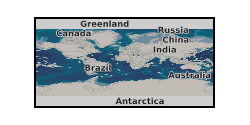
The datasets contains two sets of three dimensional images of Ketton carbonate core of size 5 mm in diameter and 11 mm in length scanned at 7.97µm voxel resolution using Versa XRM-500 X-ray Microscope. The first set includes 3D dataset of dry (reference) Ketton carbonate. The second set includes 3D dataset of reacted Ketton carbonate using hydrochloric acid.
-
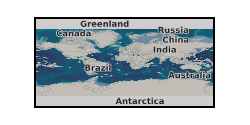
The datasets contain 416 time-resolved synchrotron X-ray micro-tomographic images (grey-scale and segmented) of multiphase (brine-oil) fluid flow in a carbonate rock sample at reservoir conditions. The tomographic images were acquired at a voxel-resolution of 3.28 µm and time-resolution of 38 s. The data were collected at beamline I13 of Diamond Light Source, U.K., with an aim of investigating pore-scale processes during immiscible fluid displacement under a capillary-controlled flow regime, which lead to the trapping of a non-wetting fluid in a permeable rock. Understanding the pore-scale dynamics is important in many natural and industrial processes such as water infiltration in soils, oil recovery from reservoir rocks, geo-sequestration of supercritical CO2 to address global warming, and subsurface non-aqueous phase liquid contaminant transport. Further details of the sample preparation and fluid injection strategy can be found in Singh et al. (2017). These time-resolved tomographic images can be used for validating various pore-scale displacement models such as direct simulations, pore-network and neural network models, as well as to investigate flow mechanisms related to the displacement and trapping of the non-wetting phase in the pore space.
-
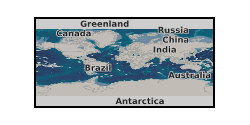
The images in this dataset are a sample of Bentheimer Sandstone from a micro-computed tomography (micro-CT) scan acquired with a voxel resolution of 6.00µm. We imaged the steady state flow of brine and decane in Bentheimer sandstone. We devised an experimental method based on differential imaging to examine how flow rate impacts the pore-scale distribution of fluids during coinjection. This allows us to elucidate flow regimes (connected, or breakup of the nonwetting phase pathways) for a range of fractional flows at two capillary numbers, Ca, namely 3.0E-7 and 7.5E-6. At the lower Ca, for a fixed fractional flow, the two phases appear to flow in connected unchanging subnetworks of the pore space, consistent with conventional theory. At the higher Ca, we observed that a significant fraction of the pore space contained sometimes oil and sometimes brine during the 1 h scan: this intermittent occupancy, which was interpreted as regions of the pore space that contained both fluid phases for some time, is necessary to explain the flow and dynamic connectivity of the oil phase; pathways of always oil-filled portions of the void space did not span the core. This phase was segmented from the differential image between the 30 wt % KI brine image and the scans taken at each fractional flow. Using the grey scale histogram distribution of the raw images, the oil proportion in the intermittent phase was calculated. The pressure drops at each fractional flow at low and high flow rates were measured by high precision differential pressure sensors. The relative permeabilities and fractional flow obtained by our experiment at the mm-scale compare well with data from the literature on cm-scale samples.
-
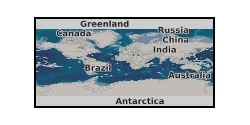
The datasets contain time-resolved synchrotron X-ray micro-tomographic images (grey-scale and segmented) of multiphase (brine-oil) fluid flow (during drainage and imbibition) in a carbonate rock sample at reservoir pressure conditions. The tomographic images were acquired at a voxel-resolution of 3.28 µm and time-resolution of 38 s. The data were collected at beamline I13 of Diamond Light Source, U.K., with the aim of investigating pore-scale processes during immiscible fluid displacement under a capillary-controlled flow regime. Understanding the pore-scale dynamics is important in many natural and industrial processes such as water infiltration in soils, oil recovery from reservoir rocks, geo-sequestration of supercritical CO2 to address global warming, and subsurface non-aqueous phase liquid contaminant transport. Further details of the sample preparation and fluid injection strategy can be found in Singh et al. (2017). These time-resolved tomographic images can be used for validating various pore-scale displacement models such as direct simulations, pore-network and neural network models, as well as for investigating flow mechanisms related to the displacement and trapping of the non-wetting phase in the pore space.
-
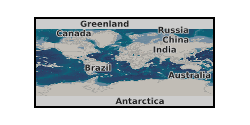
The images in this dataset show the mixing of two liquid solutions in a random bead pack as a function of time and in three-dimensions. The working fluids used in this study are solutions of methanol and ethylene-glycol (MEG, fluid 1) and brine (fluid 2). In particular, three mixtures of ethylene-glycol and methanol were prepared that differ in wt% ethylene-glycol, namely 55 wt% (MEG55), 57 wt% (MEG57) and 59 wt% (MEG59). Measurements are conducted using in the regime of Rayleigh numbers, Ra = 2000-5000. X-ray Computed Tomography is applied to image the spatial and temporal evolution of the solute plume non -invasively. The tomograms are used to compute macroscopic quantities including the rate of dissolution and horizontally averaged concentration profiles, and enable the visualisation of the ow patterns that arise upon mixing at a spatial resolution of about (2x2x2) mm3. We observe that the mixing process evolves systematically through three stages, starting from pure diffusion, followed by convection-dominated and shutdown. A modified diffusion equation is applied to model the convective process with an onset time of convection that compares favourably with literature data and an effective diffusion coefficient that is almost two orders of magnitude larger than the molecular diffusivity of the solute. The comparison of the experimental observations of convective mixing against their numerical counterparts of the purely diffusive scenario enables the estimation of a non-dimensional convective mass flux in terms of the Sherwood number, Sh = 0.025Ra. We observe that the latter scales linearly with Ra, in agreement with observations from both experimental and numerical studies on thermal convection over the same Ra regime.
 NERC Data Catalogue Service
NERC Data Catalogue Service